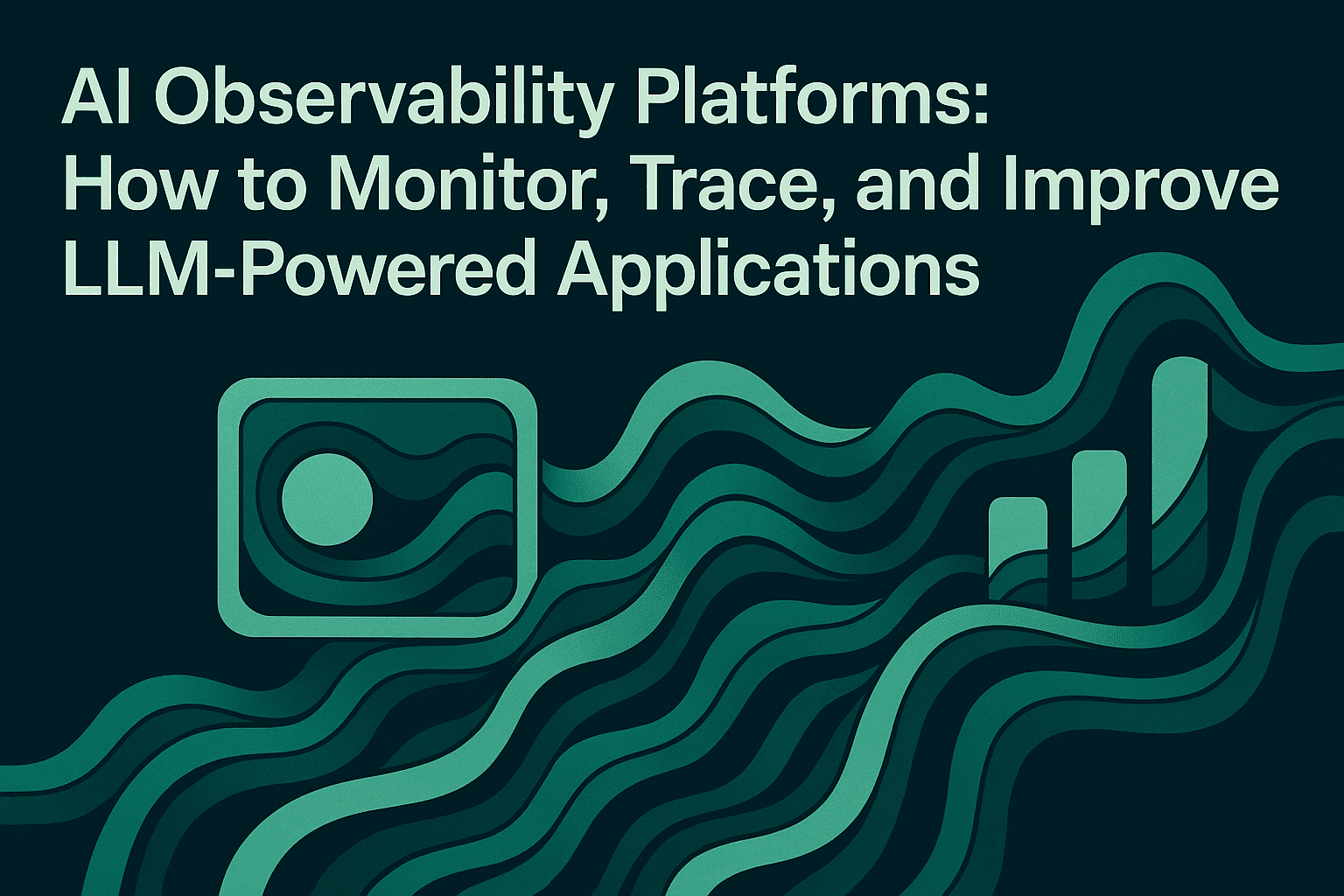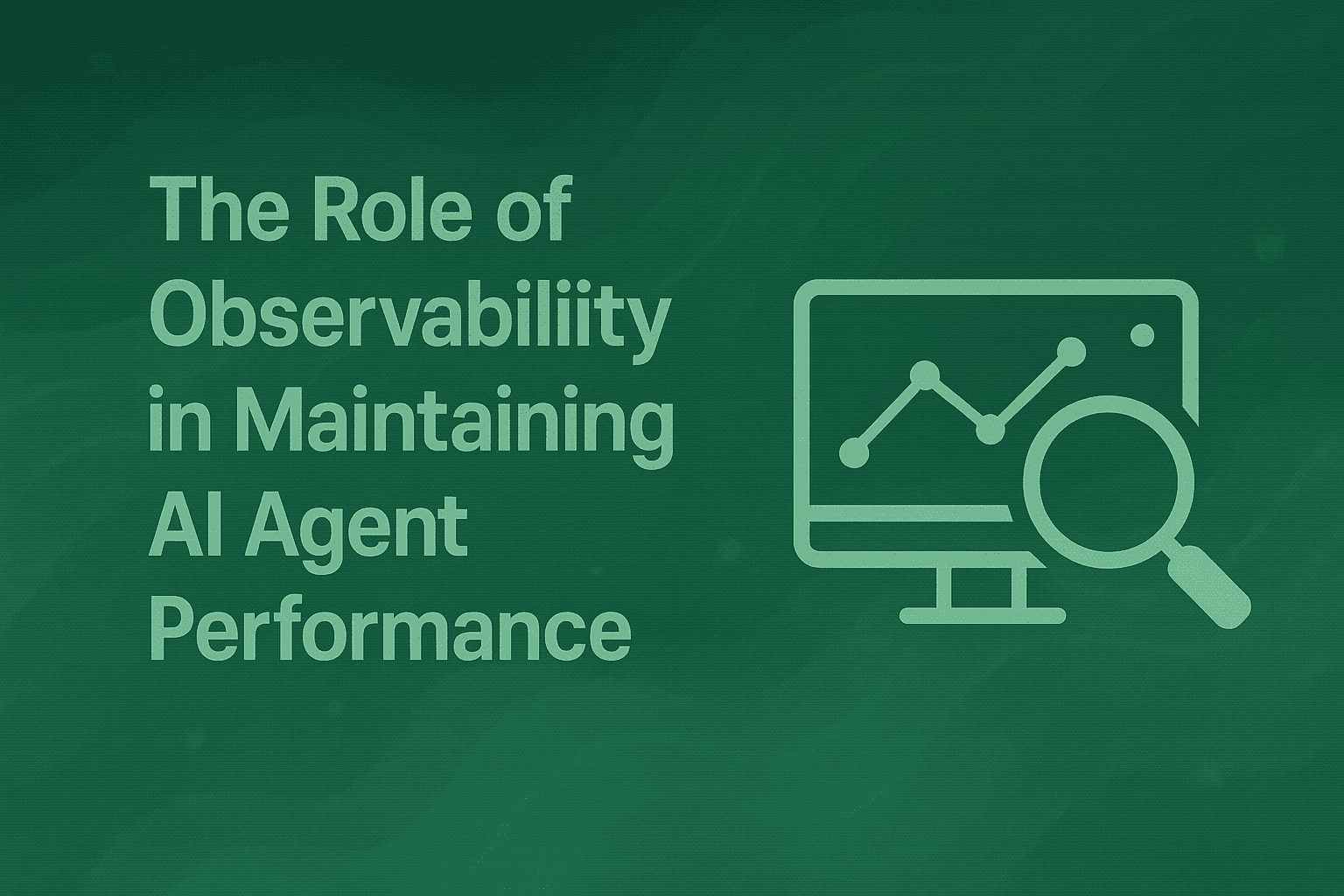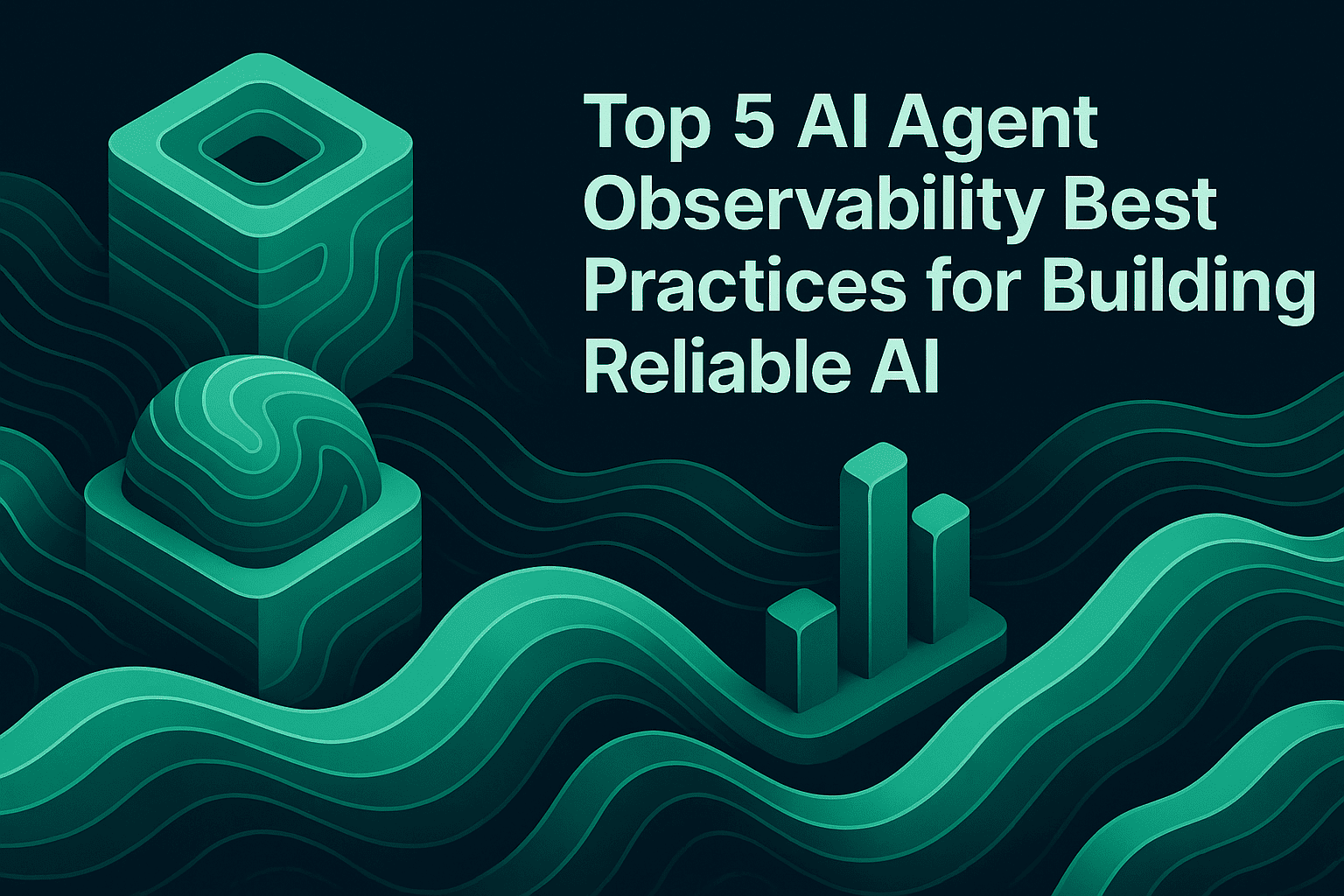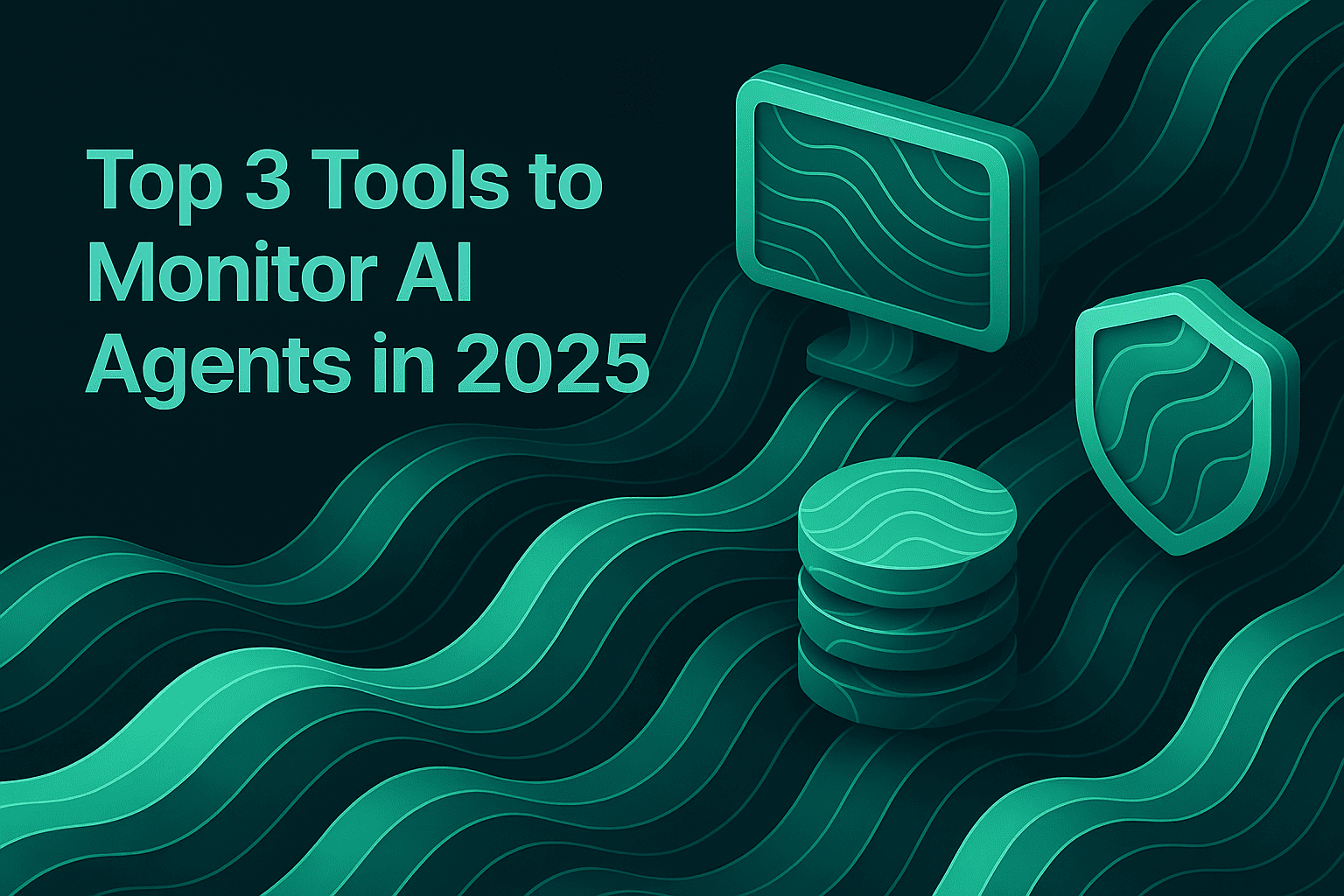AI Observability Platforms: How to Monitor, Trace, and Improve LLM-Powered Applications

AI observability platforms give teams end-to-end visibility into agent behavior, LLM outputs, and RAG pipelines so they can debug, evaluate, and monitor AI quality at scale. In production, this is the difference between reliable experiences and silent failures; between quick root-cause analysis and long nights of guesswork. Below, we cut through the noise and share a practical blueprint for deploying observability that aligns with enterprise reliability, compliance, and performance goals for teams building AI applications.
Why AI Observability Matters Now
LLM applications are non-deterministic, multi-step, and deeply integrated with data and tools. Traditional monitoring metrics (CPU, HTTP codes) miss semantic failures like hallucinations, low answer relevance, or unsafe content. Robust AI observability adds distributed traces, structured payload logging, automated evals, and human review loops to measure and improve what truly matters: reliability, safety, and user satisfaction.
See also: OpenAI system prompt and safety considerations, NIST AI Risk Management Framework
For RAG and Agentic workflows, the stakes are even higher. Retrieval, generation and tool calling components can introduce compounding errors; teams must assess context relevance, faithfulness, tool calls, multi-turn interactions and answer relevance to prevent hallucinations and drift in order to ensure superior reliability and user experience.
See: RAG survey (ACM Computing Surveys, 2024), Evaluation with LLM-as-a-judge
What Best-in-Class AI Observability Platforms Provide
- Distributed Tracing: Span and session-level visibility across model calls, tool invocations, and branching agent flows, enabling precise agent debugging and LLM tracing.Reference: OpenTelemetry Semantic Conventions for AI/LLM
- Payload Logging: Structured prompts, completions, and tool outputs with redaction policies; critical for agent observability and agent debugging.See: Data minimization and privacy guidance (ICO UK)
- Automated Evals: Built-in and custom evaluators (faithfulness, toxicity, PII, answer relevance) for running evaluations in both online and offline modes.See: Toxicity evaluation (Perspective API), PII detection guidance (NIST SP 800-53)
- Human-in-the-Loop Reviews: Queues for subjective assessments and high-risk cases, aligning to trustworthy AI and AI reliability.Reference: OECD AI Principles
- Alerting & Dashboards: Real-time alerts on quality, latency, and cost metrics.See: SRE alerting best practices (Google)
Platforms should also support open standards (e.g., OpenTelemetry semantic conventions for LLM spans) for interoperability and avoiding vendor lock-in, and integrate with broader observability stacks or data pipelines.
See: CNCF Observability landscape
Architecture Blueprint
A practical, scalable observability stack often includes:
- AI Gateway: An AI gateway like Maxim’s Bifrost unifies access to 12+ providers through an OpenAI-compatible API, giving automatic failover, semantic caching, and governance, reducing latency and increasing resilience across agents. Use model router strategies to control costs and performance.
- Explore Bifrost’s Unified Interface, Automatic Fallbacks, Semantic Caching, and Governance & Budget Management.
- Instrumentation: Adopt distributed tracing across agent orchestration, model invocations, vector store queries, external APIs, and voice pipelines. Capture span metadata like prompt versioning, persona, model parameters, and outcome signals to power agent tracing and model tracing.
- See Maxim’s Agent Observability product: Agent Observability, Distributed tracing overview (CNCF/OTel)
- Automated Evaluations: Run LLM evals, RAG evals, and voice evals on sampled production logs. Combine LLM-as-a-judge with custom deterministic/statistical metrics and configure flows for human adjudication.
- Maxim’s Simulation & Evaluation: Agent Simulation & Evaluation
- Experimentation & Prompt Management: Version prompts, compare models, and track performance deltas to drive continuous improvement with prompt management, prompt versioning, and prompt engineering workflows.
- Playground++ for experimentation: Experimentation, Prompt management and versioning practices
- Data Engine: Curate datasets from production traces and eval outcomes; enrich with human feedback for fine-tuning and regression test suites.
- Data management capabilities are integrated across Maxim’s platform (see product pages above).
Deploying Observability with Maxim AI
Maxim AI is a full-stack AI observability platform designed for multimodal agents across engineering and product workflows. Teams use Maxim to move more than 5x faster by combining observability, simulation, and evaluation in one place.
- Observability: Real-time dashboards, distributed tracing, session/span analytics, and automated quality checks with configurable thresholds.
- Product page: Agent Observability
- Deep dive guide: Maxim AI Observability Guide
- Simulation: Reproduce issues, run agent simulations across real-world scenarios and personas, and perform agent simulation and evaluation to identify failure modes quickly.
- Product page: Agent Simulation & Evaluation
- Evaluation: Off-the-shelf and custom evaluators at session/trace/span level; human-in-the-loop reviews for high-stakes cases; visualization across large test suites.
- Product page: Agent Simulation & Evaluation
- Experimentation: Advanced prompt engineering, deployment variables, versioning, and comparisons across prompts/models/parameters to optimize AI quality.
- Product page: Experimentation
- Gateway (Bifrost): OpenAI-compatible LLM gateway with multi-provider support, failover, load balancing, semantic caching, observability hooks, and enterprise-grade governance.
- Feature docs: Unified Interface, Provider Configuration, Fallbacks & Load Balancing, Observability, Governance
Implementation Checklist for Production Teams
- Instrument everything: Include agent tracing at each step of the workflow, from user input to tool calls and model outputs. Track latency, token usage, cost, and quality at session and span levels.
- Automated evals: Configure faithfulness, answer relevance, and bias checks for monitoring LLM outputs. Use dynamic sampling for cost-efficient coverage.
- Add human review loops: Route flagged outputs or high-impact sessions into queues; annotate for fine-tuning and calibration.
- Version and compare prompts: Use prompt versioning to run A/B tests across models and parameters; maintain a golden test suite for regression detection.
- Adopt gateway governance: Deploy AI gateway policies for budgets, rate limiting, and access control; leverage model router strategies to meet latency and cost SLAs.(Bifrost docs: Budget Management, SSO)
Further Reading
- Agent Observability fundamentals: A step-by-step implementation blueprint and pillars for monitoring agents.Additional: OpenTelemetry docs
- LLM Observability platforms overview: A comparative guide to core features and trends.Additional: ML observability guide (Datadog)
- RAG evaluation research: Survey and best practices for evaluating retrieval and generation components.Additional: Evaluation frameworks for RAG (AWS blog)
- Voice agent evaluation: Production and development strategies for monitoring streaming voice interactions.Additional: WER and MOS metrics
- Observability for agent frameworks: Practical tracing and debugging approaches in LangGraph, OpenAI Agents, and CrewAI.Additional: LangChain tracing
Conclusion
AI observability is the foundation for trustworthy AI, scaling agent systems with confidence. It requires more than logs: distributed AI tracing, rigorous evals, real-time alerts and human oversight. By combining an AI gateway (for resilience and governance) with full-fidelity observability and flexible evaluation workflows, engineering and product teams can deliver high-quality AI experiences, faster.
Get hands-on with Maxim’s observability, simulation, and evaluation suite to operationalize AI quality across pre-release and production.
- Try the demo: Maxim Demo
- Create a workspace: Sign up on Maxim


